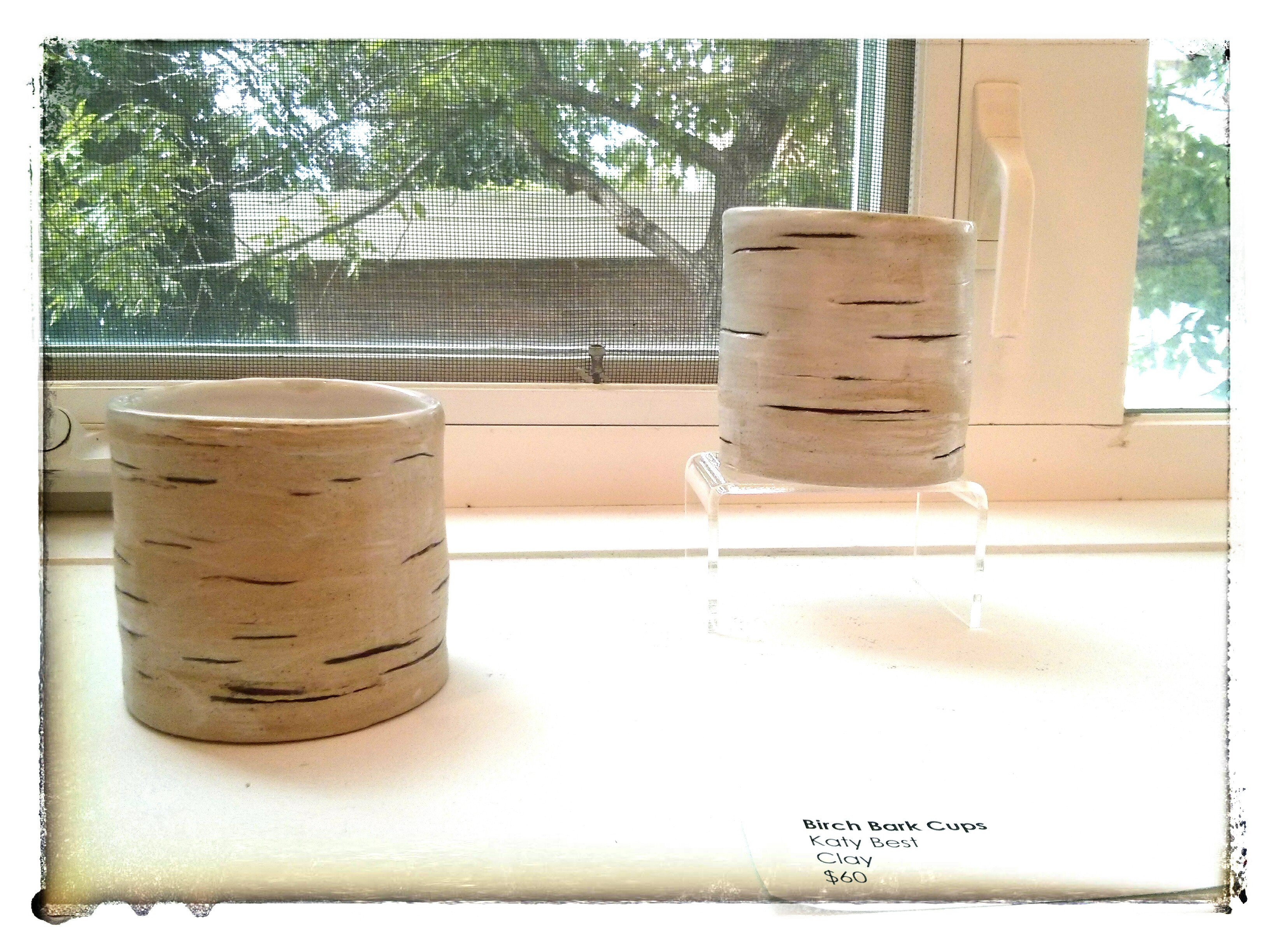Clay

Clay cups textured to look like birch bark are on display at The Centre for Creative Arts in Grande Prairie, AB.
I had the good fortune to play with hand-building a little in my grade 8 art class, but I really got into the medium while I was working in Grande Prairie, AB. My shifts were 10-12 days long in remote corners of Alberta and would be followed by a few days off in Grande Prairie. Not knowing anyone in town, and as the days off were mandatory, I looked for a hobby to fill my time. I found the Centre for Creative Arts where I started going to do pottery during drop-in studio time. My schedule did not allow me to take classes, and so I learned most of what I know about pottery from YouTube. I found pottery to be an exercise in patience. The time spent on each piece was nothing compared to the time waiting for it to dry oh-so-slowly without cracking, or the time it took to get fired, then fired again with the glaze on. It took patience with myself when I dropped pieces I’d been working on for hours, leaving me with nothing but broken shards of my day. Still, not despite all this but because of it pottery became a valuable hobby for me. Pottery has become a kind of active meditation for me, and I hope that students I introduce to it will find the same catharsis and solace in it that I have.
Clay is one of the most anticipated and exciting media worked with in the art classroom. It is messy and typically not something students have access to at home. While there are some obstacles to it’s use such as kiln access, short blocks of time for art, and lack of space to work with it, it is actually a fairly accessible medium to work with in many ways. The clay itself is quite inexpensive, particularly if it can be found recycled. If there is a pottery club in your area, inquire about using the recycled clay of its members. Many potters are happy to donate their once-thrown clay rather than wedge it for re-use on the wheel. Wedging is a great skill for potters to have, and a great way for students to get out any extra energy they may have. While pottery wheels can be difficult to find and take a lot of time to get used to, hand-building is a rewarding way to work with clay as well and exciting projects can be done with all ages.
Clay is a great way to explore texture and form. Garlic presses can be used to make spaghetti-like hair, and stamps or textured materials such as lace can be used to imprint the clay. There is a whole world to explore with clay, and while beginners are able to create and have fun with clay, potters with many years experience are still learning about the medium, exploring new techniques and experimenting with glazes.
Students who are less excited about producing beautiful 2D works of art may be hooked with this potentially utilitarian medium. Seeing the value of the outcomes of work is a motivator for students, and the idea that they may be able to use the bowl or mug that they create could get otherwise disengaged students excited about art.
